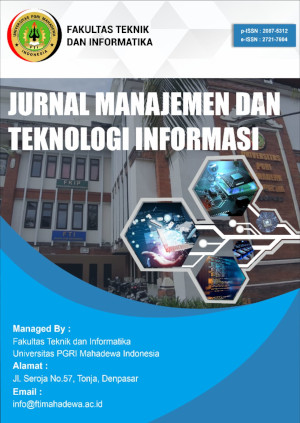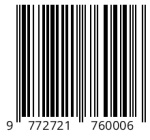RANCANG BANGUN MONITORING SUHU DAN KELEMBABAN PADA INKUBATOR PENETASAN TELUR AYAM KAMPUNG BERBASIS IOT
DOI:
https://doi.org/10.59819/jmti.v15i2.5279Keywords:
Hatching Village Chicken Eggs, ESP32,Sensor DHTT22Abstract
In making this final assignment describes in detail the process of designing and building a temperature and humidity monitoring system on an IoT-based chicken egg hatching incubator. Before designing and building the system, a survey was first conducted using the interview method as a basis for benchmarking in designing and building the system. The purpose of this final assignment is to design and realize a temperature and humidity monitoring design system on an IoT-based chicken egg hatching incubator. Temperature and humidity monitoring system to help the IoT-based chicken egg hatching process. The temperature and humidity monitoring system for the chicken egg hatching process has a main component, namely ESP32 as a microcontroller that can be connected to wifi, measuring temperature and humidity values in this system using a DHT22 sensor by comparing using the HTC-2 thermohygrometer calibration tool to get a temperature difference of 0.5 ° C and get a humidity difference of 5% RH, in testing the entire tool using 4 chicken eggs in total. The 4 eggs successfully hatched in the incubator, 3 (75%) were normal eggs, 1 (25%) were defective, and no kampung chicken eggs were identified as dead (0%). Using an incubator can speed up the hatching process of kampung chicken eggs by 20 days
Downloads
References
Erwin, E. M. Y., dan Pratama, F. 2023. "Rancang Bangun Sistem Monitoring Suhu Dan Kelembaban Ruang Server Berbasis IoT Menggunakan Arduino Pada PT. Bintaro Serpong Damai". Jurnal SISKOM-KB (Sistem Komputer dan Kecerdasan Buatan), 7(1), 15–22. https://doi.org/10.47970/siskom-kb.v7i1.453.
Fathulrohman, Y. N. I., dan Asep Saepuloh, ST., M. K. 2018. "Alat Monitoring Suhu Dan Kelembaban Menggunakan Arduino Uno". Jurnal Manajemen Dan Teknik Informatika, 02(01),161171.diambildarihttp://jurnal.stmikdci.ac.id/index.php/jumantaka/article/viewFile/413/467.
Prabowo, D., Nugroho, A., & Rahman, M. (2024). Development of an IoT-Based Egg Incubator with PID Control System and Web Application. Journal of Informatics and Vocational Education (JOIV). Retrieved from https://joiv.org/index.php/joiv/article/view/2044
Ferd, M., Hidayat, R., & Wahyudi, D. (2025). Optimization of Energy Efficiency and Hatchability Rates in IoT-Based Egg Incubators. International Journal of Smart Electronics and Computing Systems, 4(2), 55–66. Retrieved from https://journal.lembagakita.org/index.php/ijsecs/article/download/3633/2990/14133
Singh, R., & Kumar, A. (2025). Smart Egg Incubator Based on IoT and AI Technology for Modern Poultry Farming. ResearchGate Preprint. Retrieved from https://www.researchgate.net/publication/384439442_Smart_Egg_Incubator_Based_on_IoT_and_AI_Technology_for_Modern_Poultry_Farming
Ahmed, T., & Rahman, S. (2025). TinyML and IoT-enabled system for automated chicken egg incubation. Computers and Electronics in Agriculture, 225, 110164. Elsevier. Retrieved from https://www.sciencedirect.com/science/article/pii/S2772375525003946
Zakaria, M. (2023). Egg Incubator Control System: A Review. Journal of Electrical Engineering and Information Communication Technology (JEEICT), 10(1), 45–52. Retrieved from https://jurnal.uns.ac.id/jeeict/article/view/72718
Ramli, H., & Sari, D. P. (2022). Internet of Things (IoT) Applications in Smart Farming: Case Study on Poultry and Egg Incubation Systems. Indonesian Journal of Electronics and Instrumentation Systems, 12(3), 122–130.
Sharma, K., & Gupta, P. (2021). IoT in Smart Agriculture: A Comprehensive Study of Poultry and Livestock Systems. Springer Nature, Singapore. ISBN 978-981-33-4915-8.
Downloads
Published
Issue
Section
License
Copyright (c) 2025 I Made Gede Widi Mahardika, I Wayan Dika, I Kadek Juni Arta

This work is licensed under a Creative Commons Attribution-ShareAlike 4.0 International License.
Authors who publish with the Jurnal Manajemen dan Teknologi Informasi agree to the following terms:
1. Authors retain copyright and grant the journal the right of first publication with the work simultaneously licensed under a Creative Commons Attribution License (CC BY-SA 4.0) that allows others to share the work with an acknowledgment of the work's authorship and initial publication in this journal.
2. Authors are able to enter into separate, additional contractual arrangements for the non-exclusive distribution of the journal's published version of the work (e.g., post it to an institutional repository or publish it in a book), with an acknowledgment of its initial publication in this journal.
3. Authors are permitted and encouraged to post their work online (e.g., in institutional repositories or on their website) prior to and during the submission process, as it can lead to productive exchanges, as well as earlier and greater citation of published work. (See The Effect of Open Access) .





















